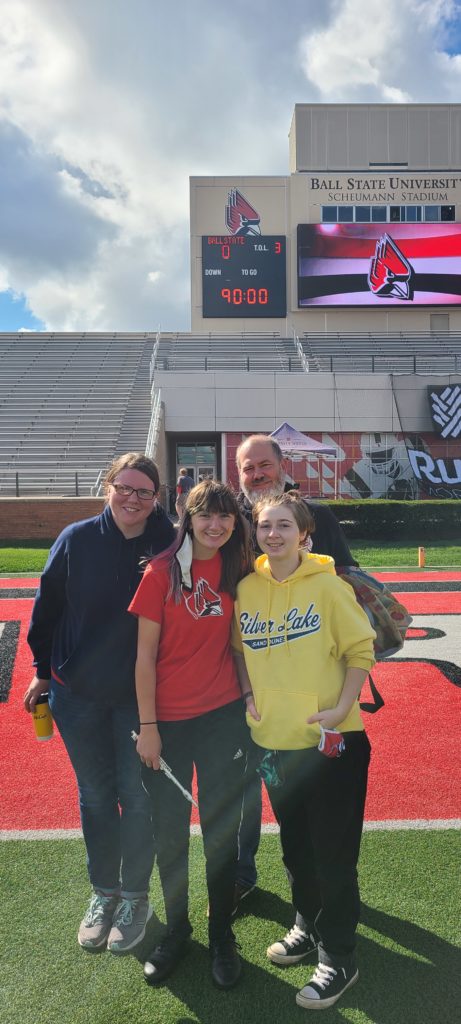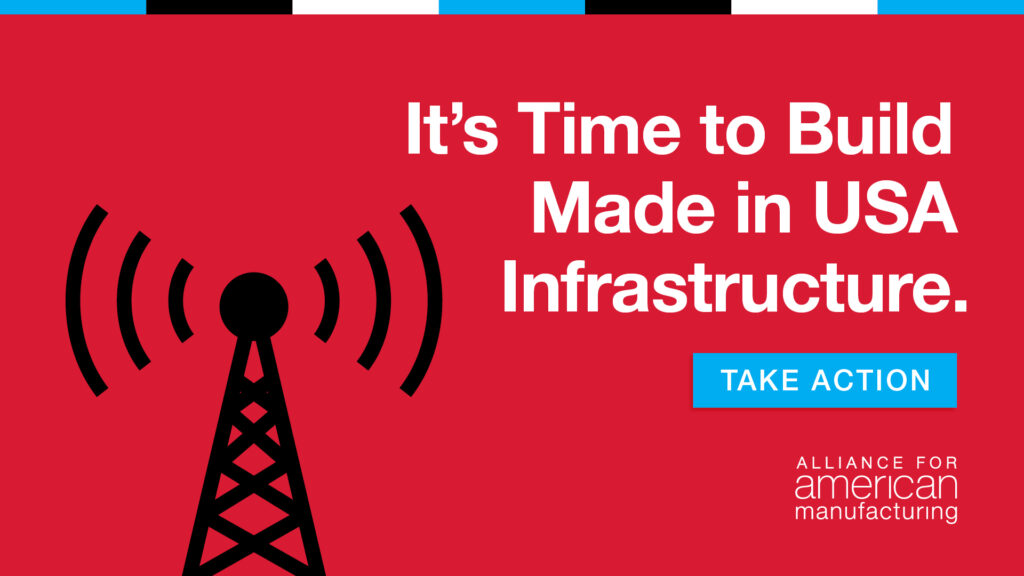How Trade Action Helped Secure the Future for Steelworkers Like Mike Lohse
Share

Lohse found a second career at the historic Gary Works steel mill in Indiana. Thanks to Section 232 trade action, he’s optimistic about its future.
For many years during the 20th century, U.S. Steel’s Gary Works was the largest steel mill in the world.
The Indiana plant, located on the Southern banks of Lake Michigan east of Chicago, employed more than 30,000 steelworkers at its peak in the 1970s. And while its workforce has shrunk since then, Gary Works is still the largest, integrated mill in North America.
But by 2015, the future looked bleak. The mill’s workforce had shrunk to about 1,500 steelworkers, as the plant was hammered by unfair foreign competition and the global steel overcapacity crisis. Some even wondered if Gary Works was on the precipice of becoming totally obsolete.
Gary Works will likely never return to its days at the steelmaking behemoth of yesteryear, but trade action implemented in 2018 has given the versatile plant a chance to thrive again, manufacturing its top-quality steel found in American-made automobiles and appliances.
In 2018, Section 232 of the Trade Expansion Act was put into place, which levied a 25% tariff on imported steel. That gave American steel producers a fair chance to compete against countries like China, Russia, India, South Korea and even allies like the European Union. Many steel companies in these countries are state-owned, receive government subsidies and lack environmental and labor standards, which make it impossible for America’s steel makers to compete with on the open market.
Mike Lohse, who is the financial secretary and benefits coordinator for USW Local 1014 at Gary Works, spent 13 years in the mill as a millwright working both production and maintenance during his steelmaking tenure.
“I can definitely say that having the tariffs in place helped put everybody on a level playing field where we are able to produce the good-quality steel at a fair price,” Lohse said. “We do not have to get jumped on from foreign countries coming in and selling their cheap steal at a cheap price, which could ultimately hurt the infrastructure of many things that people and companies buy”.
Gary Works is slowly making a strong comeback since the Section 232 tariffs went into effect. There are now approximately 2,500 USW employees at the historic mill when you combine the number of workers who are represented by the seven USW locals at the mill.
“We’ve recently been hiring a lot more people. There was almost a point when the company wasn’t hiring anybody and if they were hiring it was a couple of people here and a couple of people there but nothing significant,” Lohse said. “One of the recent employee orientation classes they have for new employees coming in across the mill had 70 people in there. So, I do believe the tariffs have helped hiring and continuing on a level playing field will keep us growing.”
Lohse feels Gary Works would have seen improvements much sooner after Section 232 was implemented, but the COVID-19 pandemic delayed the mill’s growth. But he has witnessed U.S. Steel making investments in the plant, like repairing equipment on a regular basis and not just waiting until it breaks down.
“The 232s are good to have in place and definitely great to keep things going the way that they are now,” Lohse said. “Taking them away I think would be detrimental to all kinds of industry business that follows that. When you add some of those foreign countries that are subsidizing the cost to be able to sell it cheap, it’s not that level playing field. The tariffs keep it on a level playing field for everybody.”
A Second Career
Lohse was born in Hammond, Ind., and now lives in Merrillville. He is the divorced father of three children and his fiancé has three of her own children, so he will soon have his own “Brady Bunch” family.

Lohse took an unconventional route to his career at U.S. Steel. Unlike many steelworkers who hire in soon after high school, Lohse did not begin working at Gary Works until he was 38. After graduation, he spent two years studying at Purdue-Calumet and then began working in retail for Tractor Supply Company.
Lohse’s father was a steelworker, so he was aware of the benefits and challenges when he changed careers. After he moved to Gary Works, he returned to his studies and received a bachelor’s degree in Business Management. He is also a volunteer firefighter in Morgan Township near Valparaiso.
Being a second-generation steelworker, Lohse realizes the peaks and valleys the steel market can produce.
“We heard that they were talking about these 232s, but I wasn’t quite sure how positive initially that it was going to be. But I think when we finally got the word that, yeah, they were going to happen we saw the reaction of a lot of different companies and even our union to make it into a positive for the long term,” he said. “We don’t want something that is going to affect us for just six months. We want something that is going to sustain for a long time.”
Lohse is aware that fair trade action must continue, or American workers will once again fall victim to the mercantile whims of countries with unfair policies.
Lohse wants to see President Biden stay tough on the Section 232 issues and keep a close watch on the bad actors. He believes that China will try to sell its inferior steel here any way it can, and has heard about Chinese-made steel coming from European Union countries. A new report released this week by Horizon Advisory details how China’s government is shipping large quantities of steel through the European Union to avoid the Section 232 tariffs imposed by the United States.
“That is a little concerning, of course, of a game being played where it is being shipped from one country to another or to another area to help skate out on those tariffs,” Lohse said. “When these countries are caught doing that, a little bit more of a penalty than just tariffs needs to be in place.
“We definitely don’t need to see any more of that foreign steel coming in here. We would love to promote Buy America more. We talk about that as a union – buying American – whether its tires and all those things that build our own country and build our infrastructure for our businesses to be able to help people have sustainable jobs for the future.
“If we keep going out and buying cheap steel from a lot of these other countries out there, what are we doing for us here in the United States?”
There are four blast furnaces at Gary Works, and at any given time one of them is constantly running while the others may be offline for scheduled maintenance and repairs. The tariffs have made it possible for U.S. Steel to plan for a furnace shutdown without compromising its steelmaking operations.
“The tariffs helped get us going because we were able to utilize everybody,” Lohse said. “There were times when we might have only been at an 80% number for capacity where now we are now over 90% for what the furnaces are capable of making and producing.
“After the 232s went into place and then COVID hitting, we did a lot of infrastructure repairs so when we were turning on, we were up and running and not waiting to get more repairs done. They were able to fix the furnaces up ahead of time so when we restarted the furnaces, they were ready to go. The maintenance crew was definitely busy.”
Lohse is now 51 years old. Many steelworkers his age have 25 years of experience working at the mill, but because he started working at the mill at the age of 38, Lohse realizes what lies ahead for the struggles of young steelworkers and the future of American-made steel.
“I understand that U.S. Steel is working on a strategy for reducing greenhouse gases and I know their projection to get to net-zero carbon emissions by 2050 is a very ambitious goal,” he said. “But I think if we didn’t have these 232 tariffs, a lot of this stuff would be running amok everywhere and the whole corporation could fall apart, and nobody would have the money to build that infrastructure here at our plants.
“To make it a better company making a better product by having better equipment that is here and, of course, by keeping it cost effective, that tariff allows that to happen. The quality of our steel is so much better and it goes through a rigorous process to make sure it’s the quality our customer’s demand.
“I agree with a lot of people out there talking about the 232s that say it ultimately helped us be comfortable where we are working in a company that is putting money in to build that infrastructure in our different plants. It ultimately puts money in our pockets, which puts food on our table, and we help the jobs in the local communities.
“So, all of those together, I think the 232s have helped prolong that and will keep that going for a long sustainable future.”
With his college education and previous work history, Lohse has a different perspective than many of his fellow steelworkers, who spend their entire career in the mill.
But Lohse feels at home again, living and working in Great Lakes steel country where he was born and raised. He plans on completing his work career at Gary Works and is bolstered knowing the American steel industry has taken the steps for growth and possesses the ability to compete with any steel company from across the globe.
“Personally, without this trade action, I feel this unfair competition could have caused the demise of our mills,” he said. “Not to be able to have the money to build the infrastructure or do many of the repairs over the years that will keep our mills lasting longer would have been scary.
“I do believe that having the 232s has definitely helped both at work and, of course, family life, being able to do the things that we do.”

